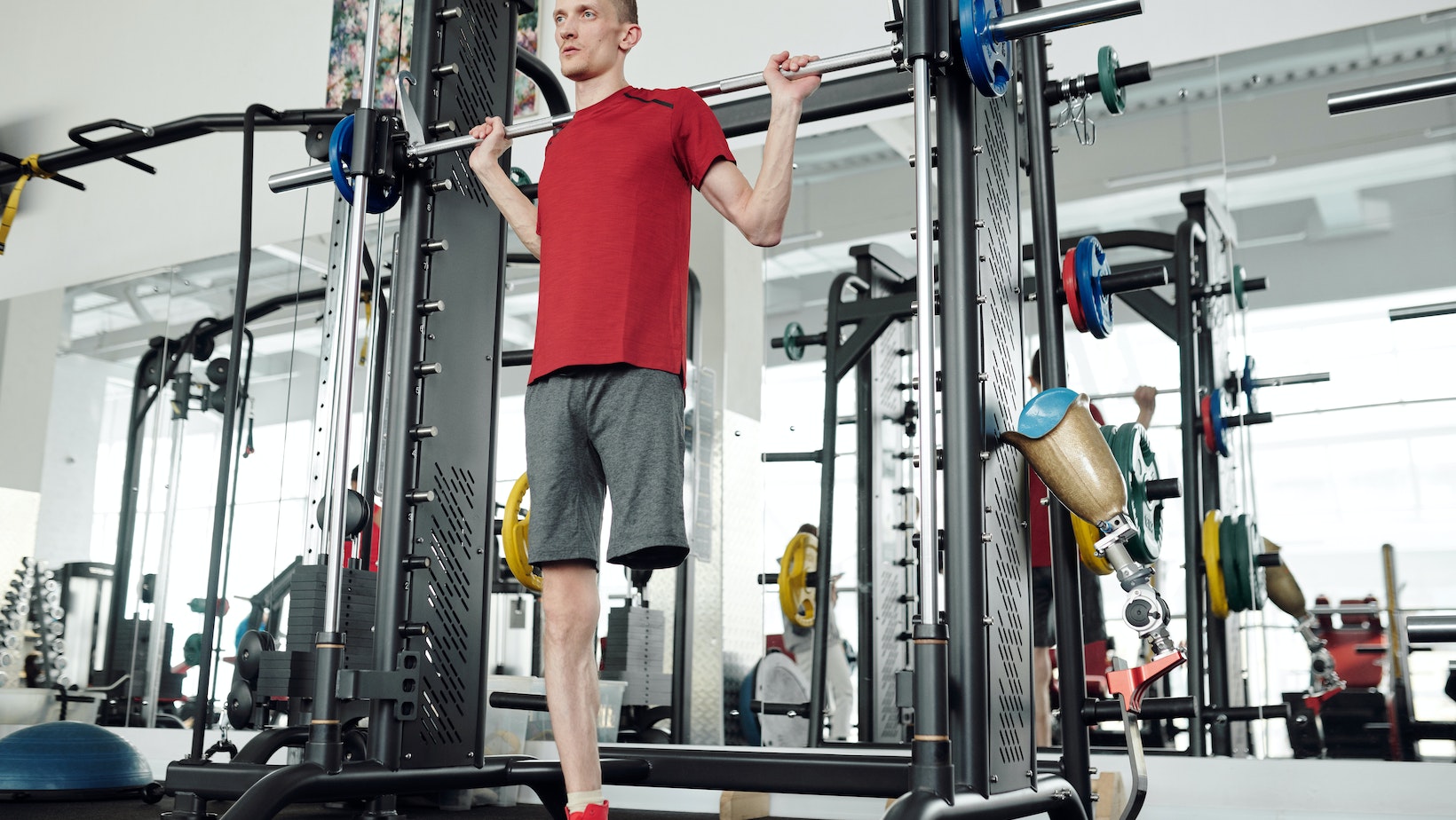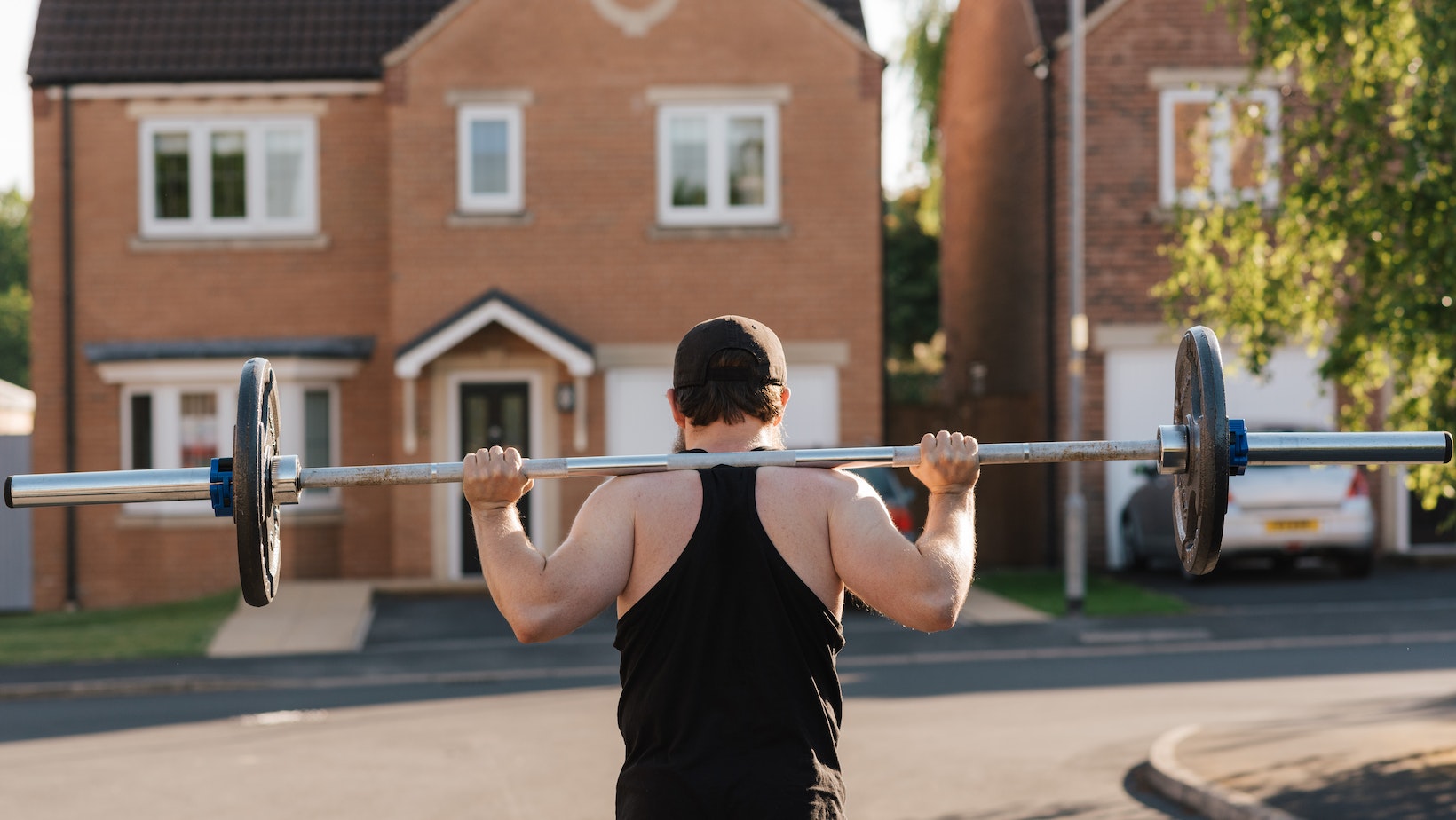
Understanding Bench Press
Bench press is an important part of any strength training program. It builds strength in the upper body and develops muscular endurance. This article will cover the basics of bench press – what it is, how to perform it correctly, and how many reps of bench press you should do. With the right technique, you can maximize the effectiveness of this exercise and build impressive upper body muscles.
Introduction to Bench Pressing
Bench pressing is a popular weightlifting exercise that primarily targets the chest muscles, but also engages the shoulders and triceps. If you’re a beginner, it’s essential to understand the proper form and technique of this exercise before attempting to lift heavy weights.
Here are some basic steps to follow:
| Lie flat on a weightlifting bench with your feet firmly on the ground. |
| Grip the barbell with your hands shoulder-width apart. |
| Slowly lower the barbell to your chest, making sure to keep your elbows close to your body. |
| Push the barbell back up to the starting position. |
As a beginner, it’s advisable to start with lighter weights and focus on mastering your form before increasing the load. The number of reps of bench press you should do depends on your fitness goals. If you’re aiming for strength gains, perform less than 8 reps per set with heavier weights. If you’re looking for muscle endurance, perform 12 or more reps per set with moderate weights. Pro tip – Make sure to rest adequately between sets to avoid muscle fatigue and injury.
Benefits of Bench Pressing
Bench pressing is an essential compound exercise that targets multiple muscle groups, making it one of the most efficient workouts with numerous benefits. Understanding the benefits of bench pressing can help beginners in determining how many reps of bench press they should do for their workout.
Here are some benefits of bench pressing:
| Benefits | Details |
| Increased upper body strength and muscle mass, specifically targeting chest, shoulders, and triceps. | |
| Improved bone density and joint health due to increased load-bearing resistance training. | |
| Boosted metabolism, resulting in more calories burned and weight management. | |
| Better posture and stability, preventing injuries while performing daily activities. | |
| Enhanced mental health, reducing stress and anxiety levels. |
As a beginner, a good starting point is doing 8-12 reps of bench press per set, with 3-4 sets per workout. Gradually increase weight and reps as you progress and gain strength. Pro Tip: Always warm-up with lighter weights and practice proper form to avoid injuries.

![]() Types of Bench Press
Types of Bench Press
Bench press is a popular exercise that provides a full-body workout and is an excellent way to build upper body strength. There are three main types of bench press:
| 1. Flat bench press – The most common type of bench press, where the bench remains flat and the weight is lifted straight up with the barbell. |
| 2. Incline bench press – The bench is angled upwards, working the upper part of the chest and shoulders. |
| 3. Decline bench press – The bench is angled downwards, targeting the lower part of the chest and shoulders. |
Beginners should start with the flat bench press and gradually progress to incline and decline bench press. To determine the number of reps and sets, it is recommended to follow the 3 sets of 8-12 reps rule for beginners. Once you are comfortable with this, you can gradually increase the weight and decrease the reps to 2-3 sets of 6-8 reps for muscle building.
Pro tip: Varying the types of bench press exercises in your workout routine can prevent plateaus, improve muscle stability, and ensure overall upper body development.
How Many Reps of Bench Press Should I Do
Getting the proper reps and sets is the key to an effective bench press routine. Depending on your fitness goals, you should choose how many reps of the bench press you should do. Understanding rep and set parameters can be the difference between making real progress and spinning your wheels.
In this article, we will discuss how many reps and sets of bench pressing you should be doing.
Determining Your Goals
Determining your goals is crucial before deciding on the number of reps and sets for bench pressing as a beginner. Are you bench-pressing for strength or endurance? Knowing your overall goal from bench pressing can help you determine the number of reps and sets you should perform.
If you want to build strength, focus on lifting heavier weights with low reps and multiple sets. Beginners can start with two sets of eight reps, increasing gradually to three or four sets over time. If endurance is your goal, use lighter weights with high reps and sets to build muscular endurance. A good starting point for beginners is to aim for three sets of 12 to 15 reps.
Remember to start with a weight that is comfortable and allows you to perform your desired number of sets and reps with proper form. Gradually increase the weight as you advance.
Rep and Set Ranges for Different Goals
To determine the ideal rep and set ranges for bench pressing, you need to consider your fitness goals.
If you’re a beginner looking to build strength and endurance, you should aim to do 3-4 sets of 8-12 reps of bench pressing at a weight that is challenging but manageable.
If your goal is to build muscle mass, you should aim to do 3-4 sets of 6-8 reps of bench pressing at a weight that is challenging enough to fatigue your muscles by the final rep. If your goal is to increase your power and explosiveness, you should aim to do 3-4 sets of 3-5 reps of bench pressing at a weight that is near your one-rep max.
Pro tip: Regardless of your fitness goal, it’s important to give your muscles enough rest time between sets, typically 1-2 minutes, to allow for proper recovery and prevent injury.
Determining the number of reps of bench press you should do depend on your fitness goals and experience level.
| For beginners: | It is recommended to start with lower reps and a weight that is manageable for 8-12 reps per set. This will help you to improve your form, technique and avoid injury. Rest for 1-2 minutes between sets. |
| For muscle growth: | If your goal is to build muscles, you should aim for a weight that you can lift for 6-8 reps per set. Rest for 2-3 minutes between each set. |
| For strength training: | If you want to increase your strength, you should lift a weight that is challenging for you to lift for 1-5 reps per set. Rest for 3-5 minutes between each set. |
Remember to consult with a fitness professional if you have any concerns or questions regarding your workout regimen.

Proper Form and Techniques
When it comes to bench pressing, it’s important to emphasize proper form and technique. Doing so can help to achieve maximum gains while minimizing the chance of injury.
This section will go over the proper form and techniques for properly executing the bench press. It will also cover how many reps one should be doing in order to be most effective.
![]() Importance of Proper Form
Importance of Proper Form
Proper form is crucial when bench pressing as it ensures your safety, helps prevent injuries, and enables you to maximize the benefits of this exercise.
Here are some tips to follow for proper form and technique:
| Lie flat on the bench with your feet firmly planted on the ground |
| Arch your back slightly and squeeze your shoulder blades together |
| Keep your wrists straight and aligned with your forearms |
| Grip the bar with your hands slightly wider than shoulder-width apart |
| Lower the bar to your chest while keeping your elbows tucked in |
| Push the bar back up using your chest muscles and exhaling |
It is recommended for beginners to start with a weight they can lift comfortably for 8-12 reps per set, aiming for 3 sets. As you progress, increase the weight and adjust the reps and sets according to your fitness goals.
Remember, always prioritize proper form over lifting heavier weights.
How to Set up for a Bench Press
Setting up for a bench press involves several crucial steps that will help you achieve proper form and technique, especially if you are a beginner. Here is a step-by-step guide to follow before performing a bench press:
| Warm-up: | Start with a five to ten-minute warm-up that includes stretching, cardio, and light weight lifting. |
| Choose the right weight: | Select a weight that is challenging but not too heavy to lift. |
| Positioning: | Lie flat on your back on the bench, placing your feet flat on the floor with your hands gripping the bar. Your hands should be slightly wider than shoulder-width apart. |
| Arch your back: | Lift your chest, squeeze your shoulder blades together, and create an arch in your lower back. |
| Lift-off: | Lift the bar off the rack, exhaling as you do so, and then lower it in a controlled manner to touch your chest. |
| Repetitions and Sets: | For beginners, aim for three sets of 8-12 reps, resting for 1-2 minutes between each set. |
Pro tip: Always seek guidance and input from a certified personal trainer when setting up for, and executing, a bench press.
The Correct Technique for Bench Pressing
The correct technique for bench pressing involves the proper form and techniques to maximize the benefits and minimize the risks of injury. For beginners, it is essential to establish the right amount of repetitions to achieve optimal results.
Here are the steps to follow to perform a bench press correctly:
| Lie on the bench with your feet firmly on the ground. |
| Grab the bar with a grip that is shoulder-width apart. |
| Lower the bar down to your chest in a controlled manner, keeping your elbows tucked into your sides. |
| Push the bar back up, extending your arms fully, and engage your chest muscles. |
| Exhale as you push the bar up and inhale as you lower it down to your chest. |
| As for the number of reps, it is best to start with a lower range, around 8-10 reps per set, and gradually increase as you develop strength and endurance. |
Pro tip: If you are a beginner, it is recommended to work with a personal trainer or a fitness professional to ensure that you are performing the bench press correctly and safely.

Common Mistakes and How to Avoid Them
Bench pressing is a popular exercise that can help build muscle strength and size. With proper form and technique, bench pressing can be a great addition to your workout routine. However, beginners may not always be aware of the common mistakes they should avoid when bench pressing.
In this article, we’ll cover these mistakes and discuss how to correct them.
Using Too Much Weights Too Soon
Using too much weight too soon is a common mistake beginners make when bench pressing. It’s essential to start with lighter weights and perfect your technique before moving on to heavier loads.
Here are some tips to avoid making this mistake:
- Start with a warm-up set of 10-15 reps with lighter weights and gradually increase the weight.
- Focus on proper form and technique, such as keeping your feet on the ground, chest out, and elbows at a 45-degree angle.
- Avoid arching your back or lifting your butt off the bench, as this can lead to injury.
- Aim to do 3-4 sets of 8-12 reps with a weight that challenges you but doesn’t compromise your form.
Remember that building strength takes time, so be patient and consistent with your training.
Pro tip: To avoid plateaus, vary your workouts, do different types of bench presses, and incorporate other chest exercises into your training routine.
Neglecting to Warm up Properly
Neglecting to warm up properly before bench pressing is a common mistake that beginners make. Failing to properly warm up can increase the risk of injury and limit the effectiveness of your workout. To avoid this mistake, you should spend 5-10 minutes warming up before bench pressing. This can include light cardio, such as jumping jacks or jumping rope, followed by stretching exercises that target the chest, shoulder, and tricep muscles.
Additionally, beginners often wonder how many reps of bench press they should do. As a general rule, beginners should aim for 8-12 reps per set, and should perform 2-3 sets in total. Rest for 1-2 minutes between sets to allow your muscles to recover. By warming up properly and following a sensible rep scheme, you can safely and effectively bench press without risking injury or undue fatigue.
Arching Your Back or Lifting Your Feet
Arching your back or lifting your feet are common mistakes when performing the bench press. These mistakes can result in injury or ineffective workouts. Here’s how to avoid them:
| Mistake | Correction |
| Arching your back | When you arch your back, you put unnecessary strain on your lower back and neck. Instead, keep your back flat against the bench and engage your core muscles. |
| Lifting your feet | When you lift your feet off the floor, you lose stability and can’t generate as much power pushing the weight. Keep your feet flat on the floor and drive through your heels. |
As a beginner, it’s important to start with light weights and focus on proper form rather than reps. Aim for 3 sets of 8-10 reps with proper form before increasing the weight. Remember, quality over quantity is essential in strength training.
Pro tip: Enlisting the help of a personal trainer or experienced gym-goer can help ensure proper form and reduce the risk of injury.
Adjusting your Bench Press Workout
When you are new to bench pressing, it can be tricky to know exactly how many reps you should do. Every workout is different, and different exercises require different approaches. But understanding the basics will help you set up a routine that works for you. Let’s take a look at how to adjust your bench press workout for maximum results.
Overcoming Plateaus
As a beginner, it’s natural to hit a plateau and stop seeing progress in your bench press workout. Here are a few ways you can adjust your routine to overcome this plateau and continue improving:
| Change the number of reps: | If you’ve been doing the same number of reps for several weeks, try increasing or decreasing the number of reps you do per set. This can help shock your muscles into growth. |
| Adjust your rest time: | Shortening or lengthening your rest time between sets can also help you overcome a plateau. Try cutting your rest time in half or adding an extra 30 seconds between sets to see if it makes a difference. |
| Incorporate new exercises: | If you’ve been doing the same bench press routine every week, try switching it up by incorporating new exercises that target the same muscle groups. This can help keep your muscles from getting too comfortable with the same movements. |
Pro Tip: It’s important to track your progress and adjust your routine accordingly to avoid hitting future plateaus.

Incorporating Variations
Incorporating variations into your bench press workout is a great way to challenge your muscles and prevent boredom. Here are some variations that you can try to add variety to your bench press routine:
| Variation | Description |
| Reverse grip bench press | This variation targets your triceps and upper chest muscles. Instead of a regular grip, grip the bar with your palms facing you. |
| Close grip bench press | This variation places extra emphasis on your triceps muscles. Keep your hands closer together than usual, about shoulder-width apart. |
| Incline bench press | This variation targets the upper chest muscles. Adjust the bench to a 45-degree angle and perform the bench press as usual. |
| Decline bench press | This variation targets the lower chest muscles. Adjust the bench to a 30-degree decline and perform the bench press as usual. |
Pro Tip: To maximize your gains, incorporate a variety of these variations into your bench press routine and gradually increase the weight or the number of repetitions. This way, you’ll challenge your muscles and prevent plateauing.
How Much Rest Between Sets
The amount of rest you need between sets during a bench press workout depends on your fitness level, workout goals, and the weight you are lifting. Here are some general guidelines to follow:
If you are a beginner, rest for around 1-2 minutes between sets. This allows your muscles to recover and prevents injury. For intermediate lifters, rest for 45-90 seconds between sets. This helps to build strength while still allowing for some muscle recovery.
Advanced lifters can rest for 30-60 seconds between sets. This maximizes muscle stimulation and growth by pushing your muscles to their limits.
Additionally, the number of reps you should aim for during a bench press workout depends on your fitness goals. For muscle endurance, aim for 12-15 reps per set. For muscle building and strength, aim for 6-8 reps per set. Finding the right amount of rest and reps for you may take some trial and error to see what works best for your body.
Pro tip: Remember to listen to your body and adjust your rest periods and reps accordingly. Don’t push yourself too hard, and always prioritize proper form to prevent injury.
Nutrition and Hydration
When you start bench pressing, nutrition and hydration are essential components of any workout routine. Without proper nutrition and hydration, your body will not be able to perform at its peak level and you won’t be able to get the most out of your workout.
In this section, we’ll discuss the importance of the right nutrition and hydration for your bench-pressing routine.
Pre-Workout Nutrition
Pre-workout nutrition plays a crucial role in maximizing the effectiveness and results of a bench press workout for beginners. In terms of how many reps of bench press to do, the answer depends on your fitness goals and fitness level, as well as your technique and form during the exercise.
Here are some pre-workout nutrition tips to help you optimize your bench press workout:
| Hydrate: | Drink plenty of water or a sports drink containing electrolytes to prevent dehydration and promote optimal physical performance. |
| Time your meals: | Eat a nutritious meal containing carbohydrates and protein 2-3 hours before your workout to provide long-lasting energy and fuel for your muscles. |
| Snack on healthy carbs: | If you’re short on time, have a small snack containing carbohydrates (such as a banana or granola bar) 30-60 minutes before your workout to give you a quick energy boost. |
Remember, the number of reps of bench press you should do depends on your individual fitness goals and current fitness level. As a beginner, it’s important to start with a weight you’re comfortable with and gradually increase the weight and number of reps over time to avoid injury and ensure consistent progress.
Post-Workout Nutrition
Post-workout nutrition is crucial for replenishing energy stores, repairing muscle tissue, and promoting overall recovery after a workout session. Here are some post-workout nutrition tips to help you maximize your gains:
- Consume carbohydrates and protein within 30 minutes after your workout session. This will help replenish glycogen stores and repair muscle tissue.
- Aim for a 3:1 or 4:1 ratio of carbohydrates to protein in your post-workout meal or snack.
- Drink plenty of water to rehydrate your body and replenish fluids lost during your workout.
- Consider adding some electrolytes to your post-workout drink to help with rehydration and muscle recovery.
Remember that post-workout nutrition is just as important as your workout itself in achieving your fitness goals.
When bench pressing for beginners, it’s recommended to start with lighter weights and higher reps to practice proper form and build endurance. Aim for 3 sets of 12-15 reps at a weight that is challenging but still allows you to maintain good form. As you progress, you can gradually increase the weight and decrease the reps to build strength. Don’t forget to allow your muscles time to rest and recover in between workout sessions.
Pro tip: Plan your post-workout meal or snack ahead of time to ensure that you have the right nutrients on hand to support your recovery.
Importance of Hydration During Workouts
Staying hydrated during workouts is crucial to increase endurance, prevent muscle cramps and fatigue, and maintain focus and alertness. Proper nutrition and hydration can ensure optimal performance during bench press workouts, which is essential for beginners who are trying to build strength and endurance.
When it comes to bench press workouts, the number of reps you should do depends on your fitness goals, training level, and personal preferences. Generally, beginners should start with a lighter weight and aim for 8-12 reps per set, with 3-4 sets per workout. As you progress, you can increase the weight and reduce the number of reps to focus on building strength and muscle mass.
Remember to stay hydrated before, during, and after your workout, by drinking water and electrolyte-rich fluids to replenish lost fluids and minerals. Also, fuel your body with nutrient-dense foods such as fruits, nuts, and protein-rich foods to support muscle recovery and growth.
